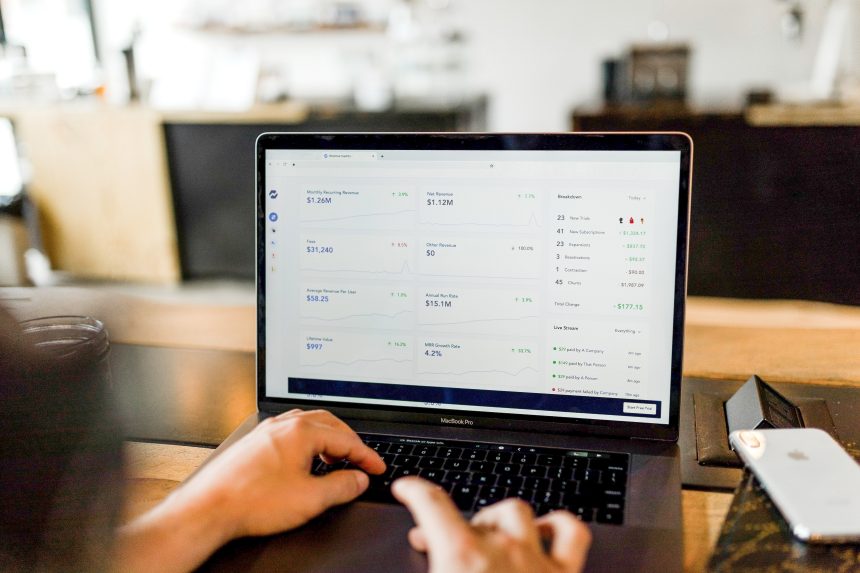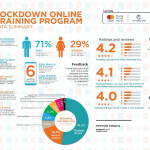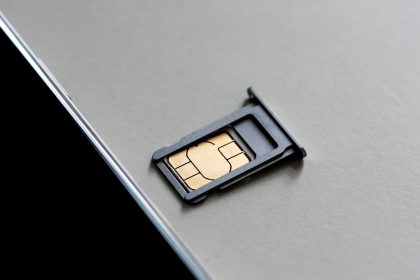One thing this pandemic has shown is that Ghana might have been a bit too slow in going digital. But it’s not too late to switch to the digital era.
Many Ghanaian businesses were more open to acceptance of cash for transactions and many were “offline” as in, not having an active online presence when it came to their business.
Now with social distancing in effect in many parts of the world, going digital is one of the best ways in surviving through this era. Whether you’re a restaurant, food vendor, education service or retailer, going “online” has to be your strategy in order to survive.
In this article, I’m going to outline the best way to get started in turning your business from “analog” to digital.
You’ll learn:
- Why digitising your business is a good option
- Options for putting your business on the web/online
- Effective communication tools for customer relations
- local digital payment platforms for getting customer payments
So let’s get started:
Why You Need Digitise Your Business
With the pandemic, more social distancing measures are being put in place. This means the era of physical contact will be greatly reduced. Customers will now be more willing to go online and do transactions online instead of risking physical contact with businesses.
This is a new opportunity for businesses to tailor their services to be more digital to attract those customers.
Digitising your business not only helps attract new customers, it can also help business owners to be more efficient and help streamline their business.
Going digital helps to automate manual processes which would help business owners free up more team to look for more clients to do more transactions.
Here’s some steps on how to get started in digitising your business:
Steps In Digitising Your Business
1. Digitally Audit Your Business

This might take a little work depending on how big your company is but it’s a very necessary process. Questions you’ll need to ask when digitally auditing your business:
- What aspects of my business need to go online?
- What important physical documents do I need to digitise?
- How can you train staff to be technology efficient and make use of online teams for business continuity?
- How will you communicate to customers about going online for future business?
Once you answered these questions and have drawn up a plan, you’ll be on your way to digitising your business.
2. Getting Your Business Online
Once you’ve prioritised once you need to do on your backend, you’ll now be ready to focus on taking your business online. There are different ways to achieve this. You can start with Social Media and then work on getting a web presence (Online Website).
It’s recommended to do both for customers to access all available channels to get access to your business.

Social Media is the easiest to get started as far as quick communication with customers but it can be limited. Twitter and Facebook are the most obvious options for social media presence. Instagram is a great option if you’re selling physical goods.
A website is very necessary because not only does it help customers get to know about your business, you can also display your products for direct sale and even funnel your social media followers to your site.
A website also gives your business a bit of “legitimacy” as users are more likely to trust businesses with a website.
So how do you get your business a web presence?
Here’s a couple of option:
- Hire A Developer
- Do-It-Yourself With Online Tools
Hiring A Developer

If you consider this option, you’re probably looking at build a customised website or you’re bring in someone to help set up one of the available tools online (eg. WordPress)
Do-It-Yourself With Online Tools
Nowadays, there are tons of online tools which make it easy to set up a website with a few clicks. It’s as simple as choosing a custom design and then customising it to your needs. Here are a few options you can consider:
Most of these DIY services are subscription fee-based where you pay a monthly fee to gain access platforms.
All in all, you will need to consider what you can budget. A developer might be on the high side especially if you consider the development cost and maintenance. With a DIY solution, you will need to consider the most affordable option but it’s a good option because maintenance is covered by the companies themselves.
3. Digital Payments (Getting Paid Online)
Now that your business is up and running online, it’s time to figure out how to let your customers pay for your services and products. Cash payments don’t seem like the best option now.
This is where digital payments comes in.

Mobile Money is currently the most popular way of accepting payments for services. But mobile money can have its limitations. Depending on how you want to grow your business, reconciling transactions could be a bit much and getting customer information would also be a hassle.
Also, with mobile money, you’ll likely need a second handset to deal with customer payment transactions.
Card payments, although not as popular, is still a good payment option especially when it comes to security.
There are local digital payment options that you can consider. Here are a few:
Most of these platforms require you to register and onboard. It is as simple as signing up, entering your personal information, and electronically submitting your business registration documents.
With Flutterwave, you get access to a digital dashboard for payment tracking, an Invoicing feature, and newly launched e-commerce feature for selling physical products online.

Using payment platforms is a great option because it automates the payment process. Customers can choose to use mobile money or their bank cards to make payments on the frontend for your products and services and businesses can just track everything on the backend.
With Flutterwave’s payment link feature, you can create a simple url and send it to customers via WhatsApp or other social media platforms for them to make payments.
4. Communication

Lastly, you need to be able to effectively communicate with customers online in case you need to provide support or answer queries. Email is a good option but most people would prefer quicker interactions with businesses. Some ways you can provide quicker feedback with customers including:
- WhatsApp Business Account Chat
- Website Chat Communication
- Social Media (Facebook Messenger, Twitter, Instagram)
A WhatsApp Business Account is a great option for communication. WhatsApp is one of the main communication tools that most people use when contacting businesses and most SMEs and even local corporations use WhatsApp for communication with customers.
If you have a business website, you can integrate a communication tool to communicate with website visitors and customers. Tools like Intercom and others offer a way to integrate a chat tool in your website (for a fee).
You can also try out Crisp which is free to use.
If you’re currently running your business through your social media page, you’ll need to be very active when providing feedback to customers. Response times should be at best less than 30 minutes.

A good way to respond to keep track of social media inquiries to use tools like Tweetdeck for Twitter, and Facebook Messenger for Facebook.
All this information may seen daunting at first but you need to take it one step at a time.
- Firstly, “digital audit” your business
- Create an online presence (Social media or Website or both)
- Use a digital payment platform to accept payments online
This pandemic may have caused a lot of disruptions but it doesn’t mean your business has to suffer long term. Pivot to going online and digitising your business and it will bear some fruits along the way.










